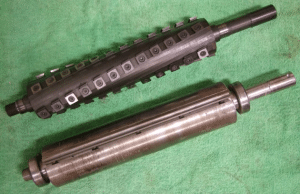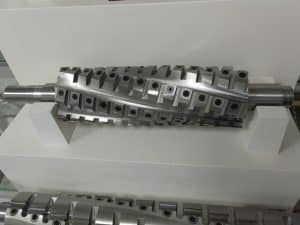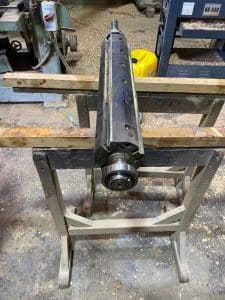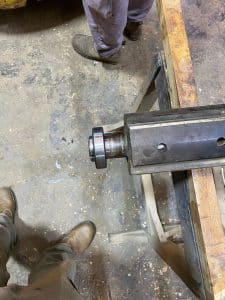With the advancement of the times, science and technology are also developing continuously. In the woodworking machinery industry, spiral cutter heads are gradually replacing traditional straight-edged cutter heads. Kwa mfano, in Europe and the United States, spiral cutter heads have become the most popular thing in woodworking machinery.
But this does not mean that all sawmills are suitable for using spiral cutter heads. Understanding spiral cutter heads versus traditional straight-edge cutter heads will help you better determine which tool is best for your project.
If so, you may be wondering what the difference is between a spiral cutterhead and a straight-edge cutterhead, and which one you should choose for your project. Katika makala hii, we’ll help you decide by looking at some of the details that make them special.
WHAT IS STRAIGHT CUTTER HEAD?
Simply put, a fixed-blade cutterhead consists of two or more blades (often called cutters) spaced apart on a rotating steel head. A spiral cutterhead, on the other hand, consists of small square cutters that are tightly arranged in a spiral pattern on a rotating steel head. Both straight blades and spiral cutters remove surface wood as the board passes through the rotating head.
Straight edge knives have been used on DIY machines for a long time, but as the machinery industry develops, spiral knives are becoming more and more popular, and more and more manufacturers are beginning to offer blades and spiral cutterheads.

WHAT IS THE REASON FOR THE POPULARITY OF SPIRAL CUTTER HEAD?
One of the reasons for the popularity of helical mills is that you don’t have to replace them as often as the blades, so they last longer. Kwa mfano, when a blade becomes chipped, you have to replace the entire blade. Hata hivyo, if the milling cutter blade is scored, only the scored blade needs to be replaced, not the undamaged blade.
Wakati huo huo, the spiral cutter head has a smaller cutting contact area than the flat cutter head, which means it has less cutting resistance and friction. Spiral cutter heads generate less heat and noise than flat cutters due to low resistance and friction. What’s more, the blades mounted on the spiral cutter head have a longer service life.
Zaidi ya hayo, the smaller recessed blades on auger cutters work in smaller sections to remove large amounts of surface wood. This produces a smoother wood surface than a straight blade cutter, reducing the need for additional sanding or finishing. Smaller cutting widths also produce smaller wood chips, reducing the likelihood of clogging the dust collection system.
It is worth noting that the unique design of the helical milling cutter allows the embedded alloy blade to contact the wood at different intervals. This reduces the burden on the motor, extends motor life and reduces energy consumption.
CONCLUSION
Hivyo, does this mean that helical milling cutters are better than straight edge milling cutters?
Not necessarily, and while a true spiral cutter has some maintenance and operating advantages, you can’t ignore the price advantage of a straight edge cutter. Aidha, the spiral cutter head has certain requirements on the speed of the cutting machine, yaani, a machine with a suitable speed is needed to better use the spiral cutter head.
With these points in mind, a straight edge mill may be the perfect solution for a novice woodworker or someone on a budget.



